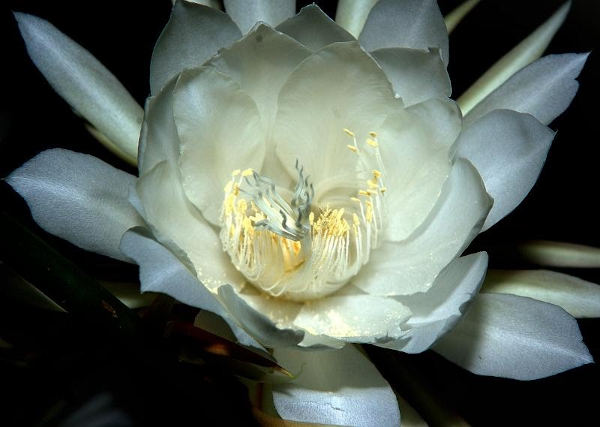DEHRADUN: In one of a kind and the biggest conservation programme in the country, Uttarakhand state has identified total 1145 plant species ranging from state flower Brahmkamal to mythological ‘Sanjivni Booti’.
A report containing details of all these species was realised by research wing of Uttarakhand state forest department on Sunday. This report will be updated annually in April starting from now onwards said the officials.
Sanjiv Chaturvedi, 2002 batch Indian Forest Services officer who heads the research wing of the state forest department said, “The aim of the entire exercise is germplasm conservation and to promote conservation of plant species among general public and to end ‘plant blindness’, a term coined by US botanist Elisabeth Schussler and James Wandersee in 1998 because plants play more important role in sustaining human life in terms of carbon sequestration, supply of oxygen, air purification, for food security in terms of gene pool of wild species, and providing valuable biochemical in preparation of various medicines.”
Out of these plant species, a total of 386 species conserved, have medicinal properties such as Ashwagandha’, ‘Giloy’, ‘Kalmegh’ and ‘Chitrak’, which are presently part of scientists’ research to find a possible cure to coronavirus.
Interestingly, 90% of these species are conserved ex-situ (out of their natural habitat) and only 10% are conserved in-situ (inside their natural habitat).
The exercise took more than three years of research, field visits, camping, sampling and locating these species along with identifying their characteristics, habitat etc.
The report contains detailed information of each species on 9 parameters – family name, scientific name, local name, conservation status, number and location at research establishment, endemism, uses and thumbnail size photograph; conservation sites spread over 8 Research ranges across the State – Haldwani, Lalkuan, Pithoragarh, Ranikhet, Nainital, Gopeshwar, Dehradun, Uttarkashi.
The list of these species contains a diverse range of various species of trees, herb, shrub, bamboo, orchid, grass, fern, cane, climber species, palm, cycad, cactus, succulent, aquatic plants, insectivores, wild flowers, alpine flowers upto lower plant like moss, lichen, algae, and liverwort.
“In present times, website raising several threats such as climate change, global warming, smuggling/illegal extractions, biotic interferences, deforestation, habitat destruction, unplanned construction, grazing, fire which have escalated extinction rate of plant species upto 5-10 species per year as per various estimates. This will have adverse consequences for future survival,” said Magsaysay awardee civil servant.
Out of these 1145 species, 1072 species have been identified and 73 are yet to be identified.
According to International Union for Conservation of Nature (IUCN) list, total of 8 species among these are critically endangered, 23 species are endangered; 14 species are vulnerable and 12 are near threatened and one remains endangered whole 11 species are threatened as per Uttarakhand biodiversity Board list.
Further, out of 1145 total conserved species, 46 species are endemic, of which 25 are near endemic, 10 species are endemic to Uttarakhand, and 10 are endemic to Indian Himalayan Region.
Endemic species are the ones which are unique to a specific geographical area of the planet including a mountain range, a lake, a landscape or a river valley.
“We can already see that most of the conservation efforts and public attention, funds diverted into conservation of glamorous mega fauna species like tiger, elephant etc, completely neglecting plant conservation while they play much more important ecological role,” added the decorated officer.
The officer further added that species conserved have widest possible diversity because plain areas of Uttarakhand fall in tropical zone, middle Himalayan areas are in temperate zone and higher Himalayas are in alpine zone and accordingly the conserved species include from Sal tree in plain areas to Brahmkamal in alpine areas.
Source: Indian Express
Image Courtesy: Google Sites
You may also like
-
New Heat-Based Approach To Cancer Treatment Can Reduce Chemotherapy Doses
-
Scientists Take A Major Step Towards Unification Of Classical & Quantum Gravity
-
India Graphene Engineering and Innovation Centre (IGEIC) Under the Vision of Viksit Bharat@2047 Launched
-
New High-Performance Gas Sensor can Monitor Low Level Nitrogen Oxides Pollution
-
Antidepressant Drug can be Repurposed for Treating Breast Cancer
